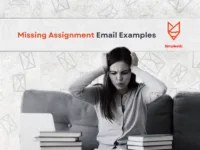Email Etiquette Examples and Guidelines | In today’s digital age, email has become an essential tool for communication in both personal and professional settings. However, the effectiveness of your emails isn’t just dependent on their content but also on how you communicate. Email etiquette plays a crucial role in ensuring your messages are well-received and convey the intended message. In this comprehensive guide, we’ll explore email etiquette best practices, provide examples to illustrate each point, and offer guidelines for mastering the art of email communication.
Email Etiquette Best Practices
When crafting an email, the tone you use plays a crucial role in how your message is perceived. A professional tone is essential in ensuring that your communication is clear, respectful, and taken seriously. Here’s why using a professional tone is important and how to achieve it:
- Builds Respect and Credibility | A professional tone conveys respect for the recipient, whether they are a colleague, client, or supervisor. It shows that you take the conversation seriously, which in turn builds your credibility and fosters trust.
- Reduces Misunderstandings | Emails lack the non-verbal cues of face-to-face communication, so the words you choose can easily be misinterpreted. A professional tone helps avoid misunderstandings by ensuring that your message is clear, direct, and free from ambiguity.
- Maintains a Positive Relationship | Even when addressing sensitive issues or providing constructive feedback, a professional tone helps maintain a positive and collaborative relationship. It allows you to communicate difficult messages without offending or alienating the recipient.
- Reflects Your Professionalism |The way you communicate in writing reflects your overall professionalism. A well-crafted email with a professional tone demonstrates your attention to detail, your ability to communicate effectively, and your respect for the business environment.
Email Etiquette | Essential Guidelines
- Know Your Audience
Before crafting an email, consider who the recipient is and adjust your tone and language accordingly. - Use a professional title
- Subject: Meeting Agenda for Friday, 2nd April | Read more 135 Email Subject Line Examples
- Use Professional Salutations and Closings
Address recipients with respect and courtesy, using appropriate salutations like “Dear” or “Hello” and closings such as “Best regards” or “Sincerely.” - Avoid Using Abbreviations and Emoticons
Maintain a professional tone by refraining from using slang, abbreviations, or emoticons in your emails. - Respond Promptly to Emails
Try to respond to emails in a timely manner, even if it’s just to acknowledge receipt or provide an estimated timeframe for a detailed response. - Keep Your Emails Concise and to the Point
Example:
“We need to reschedule our meeting to 3:00 PM on Monday, April 5th.” - Proofread Your Emails Before Sending
Example:
“I look forward to hearing from you soon.” - Be Mindful of the Recipient’s Time
Example: “I appreciate your prompt response to this matter.” - Use Formatting to Enhance Readability
- Break your emails into paragraphs, use bullet points for lists, and bold important information to make your message easy to read and understand.
- Be Cautious with Attachments and Links
- Always double-check attachments before sending to ensure you’re sending the correct files. Be wary of including links from unknown sources to avoid potential security risks.
- Respect Confidentiality and Privacy
- Avoid sharing sensitive information in emails and use encryption if necessary to protect confidential data.
- Use a Professional Email Signature
- Include your contact information, job title, and company details in your email signature to provide recipients with essential information about you.
Email Etiquette Examples
Here are some examples of professionalism in email communication:
Related | Alternatives to “I Wish You the Best in Your Future Endeavors”
- Example of a Professional Greeting:
“Dear Dr. Smith,”
“Good Morning, Ms. Johnson,”
“Hello, Team,” - Example of a Professional Closure:
“Sincerely,”
“Best regards,”
“Thank you,”
“Warm regards,”
- Example of a clear request
“I wanted to follow up on the report we discussed during our last meeting. Could you please provide an update by Friday?” This is clear and to the point, avoiding unnecessary details while still conveying the necessary information.
- Example of respect in email communication:
“Could you please review the attached document and share your feedback by the end of the day?”
“Thank you for your time and assistance with this matter.” Using “please” and “thank you” shows respect and appreciation for the recipient’s time and effort.
- Example:
“I’ve attached the revised contract for your review. Please let me know if you have any questions or concerns.” Correct grammar, spelling, and punctuation are crucial for maintaining professionalism in your emails.
- Example:
“I noticed that the project timeline has been adjusted. Could we schedule a meeting to discuss the implications?” This statement is neutral and focused on finding a solution rather than assigning blame or showing frustration.
Related | 26 Examples of a Professional Email Asking for Something
Email Etiquette Examples and Guidelines
Mastering email etiquette is essential for effective communication in today’s fast-paced digital world. By following best practices, incorporating examples, and adhering to guidelines, you can ensure that your emails are clear, professional, and well-received. Remember that email etiquette is not only about what you say but also how you say it. Practice these principles consistently, and you’ll become a proficient communicator via email, fostering stronger relationships and achieving your communication goals effectively.




